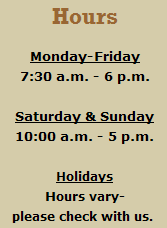PetsVentura Pet Relocation Solutions robustly discourage the following:
Use of other than nonstop flights, particularly for pets that will not be traveling in the cabin.
Stay away from weekend or holiday flight periods as the high numbers of travelers during these periods may prevent your pet from getting as much consideration as it should.
If your pet will not be traveling in the cabin with you, keep away from travel during very cold or hot times of the year and make certain that flights are early morning or late night if during the summer and midday if during the winter.
The IATA prohibits the delivery of animals where temperatures at either the origin or destination are below 45F degrees or above 85F degrees. Many airlines have additional temperature-related restrictions.
The use of sedation or tranquilizers is not advised since their effects on animals at high altitudes are unpredictable.
Allow up to two extra hours for check-in and, if your pet is not traveling with you in the cabin, arrival procedures.

Airlines may have any of the following transportation options for your pet: in cabin, checked baggage, or as cargo
IN CABIN - You must be on the same flight as your pet and the transporter in which the pet is to travel must fit entirely under the seat in front of you. Weight limitations may also apply.
CHECKED BAGGAGE - You must be on the same flight as your pet and the crate and pet combined must weigh no more than one hundred pounds.
CARGO - If the pet does not qualify for either of the earlier options, it must travel as cargo. Unfortunately, when shipping your pet as cargo, there is no reassurance as to the particular flight your pet will be on, unless you choose priority or "counter-to-counter" shipping, which we strongly recommend.
In spite of which option will be used for your pet, reservations are required well in advance as each flight can only transport a certain number of animals in each cabin class and cargo hold. These capacities differ by airline and aircraft.
Be sure to reconfirm with the airline 24-48 hours before departure that you will be bringing your pet.
Traveling in the cabin

Make sure to have a leash or harness with you as most airports will require that the pet be removed from the carrier at the security screening checkpoint so that the carrier may be sent through the x-ray machine.
Your pet will not be permitted out of the carrier during the flight.
Traveling as Excess Baggage or Cargo
The crate must close securely with a method that requires no special keys or tools to manage or unlock and must not have wheels on it.
The crate bottoms should have absorbent material such as newspaper and may not contain litter. Wire crates are prohibited.

Attach a label to the crate with the information: your flight information, destination, and arrival contact name and phone number.
Place labels with the words "LIVE ANIMAL" with arrows pointing upright on all sides and an additional label without arrows on the top.
A sign should be placed on the front door with the name of the pet, breed, destination, flight number and feeding instructions.
Include empty food dish secured inside the kennel and from outside accessible from the inside a water bottle.
Attach extra food, and any necessary medication to the outside of the crate along with any instructions for these items and a twenty-four history of feeding and medication.
Consider insuring your pet
Make sure you have copies of your pet's health and rabies certificates.
Prior to boarding the airplane, confirm that your pet has been loaded.
When you enter the aircraft, inform the flight attendant that your pet is on board and oblige that they confirm to you that your pet has been loaded
Pick up your pet as soon as possible after you reach your destination.
If your pet will be traveling unaccompanied (CARGO), contact an IPATA member agent / company to handle the shipment.
























0 comments:
Post a Comment